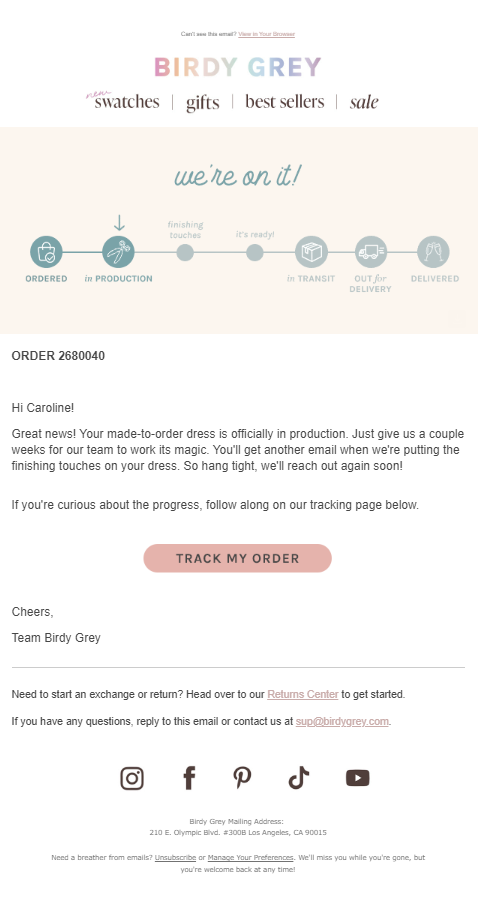In today’s competitive market, the sale doesn’t end when a customer makes a purchase. In fact, the post-purchase experience is crucial for customer satisfaction and long-term loyalty. But how do you build an effective post-purchase sequence that keeps customers coming back?
We’ve got you covered with this comprehensive guide and a YouTube tutorial to walk you through the process.
Why a Post-Purchase Sequence Matters
The post-purchase sequence is your opportunity to build a lasting relationship with your customers. It helps to reassure them about their purchase, provides additional value, and encourages future transactions. Here are some key reasons why it’s important:
- Enhances Customer Satisfaction: A well-crafted sequence reassures customers and makes them feel valued.
- Encourages Repeat Business: By keeping customers engaged, you increase the likelihood of repeat purchases.
- Boosts Brand Loyalty: Consistent communication fosters a stronger connection to your brand.
- Reduces Returns and Complaints: Providing clear information and support can prevent issues that lead to returns or complaints.
Key Elements of an Effective Post-Purchase Sequence
To create a successful post-purchase sequence, incorporate the following elements:
Thank You Email
Immediately after a purchase, send a personalized thank you email. Express gratitude for their purchase and set a positive tone for future interactions. A warm thank you email can show customers that you appreciate their business, which helps establish a personal connection.

Image credit: Allbirds
Order Confirmation and Tracking
Provide order details and tracking information. This reassures customers and keeps them informed about their purchase status. Detailed order confirmation emails should include:
- Order number
- Item(s) purchased
- Expected delivery date
- Tracking link
This transparency can help in reducing anxiety and building trust with your customers.

Image credit: Birdy Grey
Follow-Up Surveys
Ask for feedback on their shopping experience. This shows you value their opinion and can provide valuable insights for improving your services. Consider asking questions like:
- How satisfied are you with your purchase?
- Was the checkout process smooth?
- Is there anything we could improve?
Use their responses to make data-driven improvements to your customer experience.

Image credit: Athena Club
Upsell and Cross-Sell Opportunities
Introduce related products that complement their purchase. This can increase your average order value and provide added convenience for the customer. For instance, if a customer bought a camera, suggest accessories like lenses or tripods. Ensure these recommendations are relevant and add value to their initial purchase.

Image credit: Ten Thousand
Customer Support and FAQ
Ensure customers know how to get help if they need it. Include links to your support page and an FAQ section to address common concerns. This can significantly reduce the number of support requests and improve the overall customer experience. Common FAQs might include:
- How do I track my order?
- What is your return policy?
- How can I contact customer service?
Step-by-Step Guide to Building Your Post-Purchase Sequence
Step 1: Define Your Goals
What do you want to achieve with your post-purchase sequence? Whether it’s increasing customer satisfaction, encouraging repeat purchases, or gathering feedback, clear goals will guide your strategy. Set specific, measurable goals to evaluate the effectiveness of your sequence.
Step 2: Segment Your Audience
Not all customers are the same. Segment your audience based on purchase behavior, demographics, or other relevant criteria to tailor your messages effectively. For example, new customers might receive a different sequence than repeat buyers. Use data from your CRM or marketing platform to create these segments.
Step 3: Craft Your Messages
Create compelling, relevant messages for each stage of the sequence. Ensure your tone is friendly and helpful, and focus on adding value rather than just pushing more sales. Personalize your emails with the customer’s name and specific purchase details. Messages could include:
- Personalized thank you notes
- Helpful tips on using their purchased product
- Exclusive offers or discounts on future purchases
Step 4: Automate the Process
Use email marketing automation tools to set up your sequence. Automation ensures timely delivery and allows you to focus on optimizing content rather than managing logistics. Platforms like Mailchimp, Klaviyo, or HubSpot offer robust automation features that can handle this for you.
Step 5: Monitor and Optimize
Regularly review the performance of your post-purchase sequence. Use metrics like open rates, click-through rates, and customer feedback to identify areas for improvement. A/B testing different email content and timing can also provide insights into what works best for your audience.
Watch Our YouTube Tutorial
For a more hands-on approach, check out our detailed YouTube tutorial on building a post-purchase sequence. It provides practical insights and demonstrations to help you get started. Watch the tutorial here.
Final Thoughts
Building an effective post-purchase sequence is essential for enhancing customer satisfaction and fostering brand loyalty. By following this guide and utilizing the tips provided, you’ll be well on your way to creating a sequence that not only meets but exceeds customer expectations.
For a deeper dive, don’t forget to watch our YouTube tutorial. Happy sequencing!
